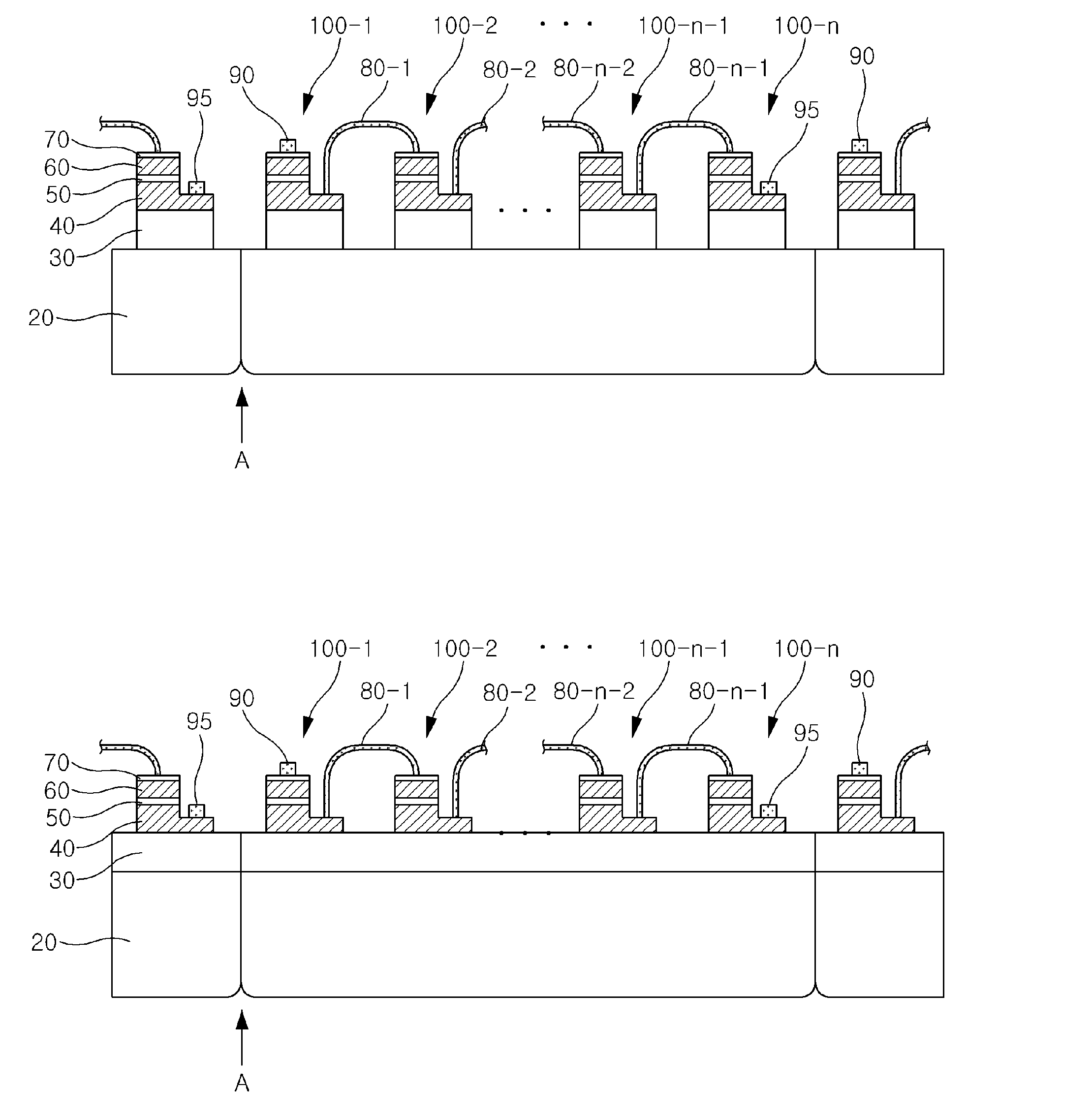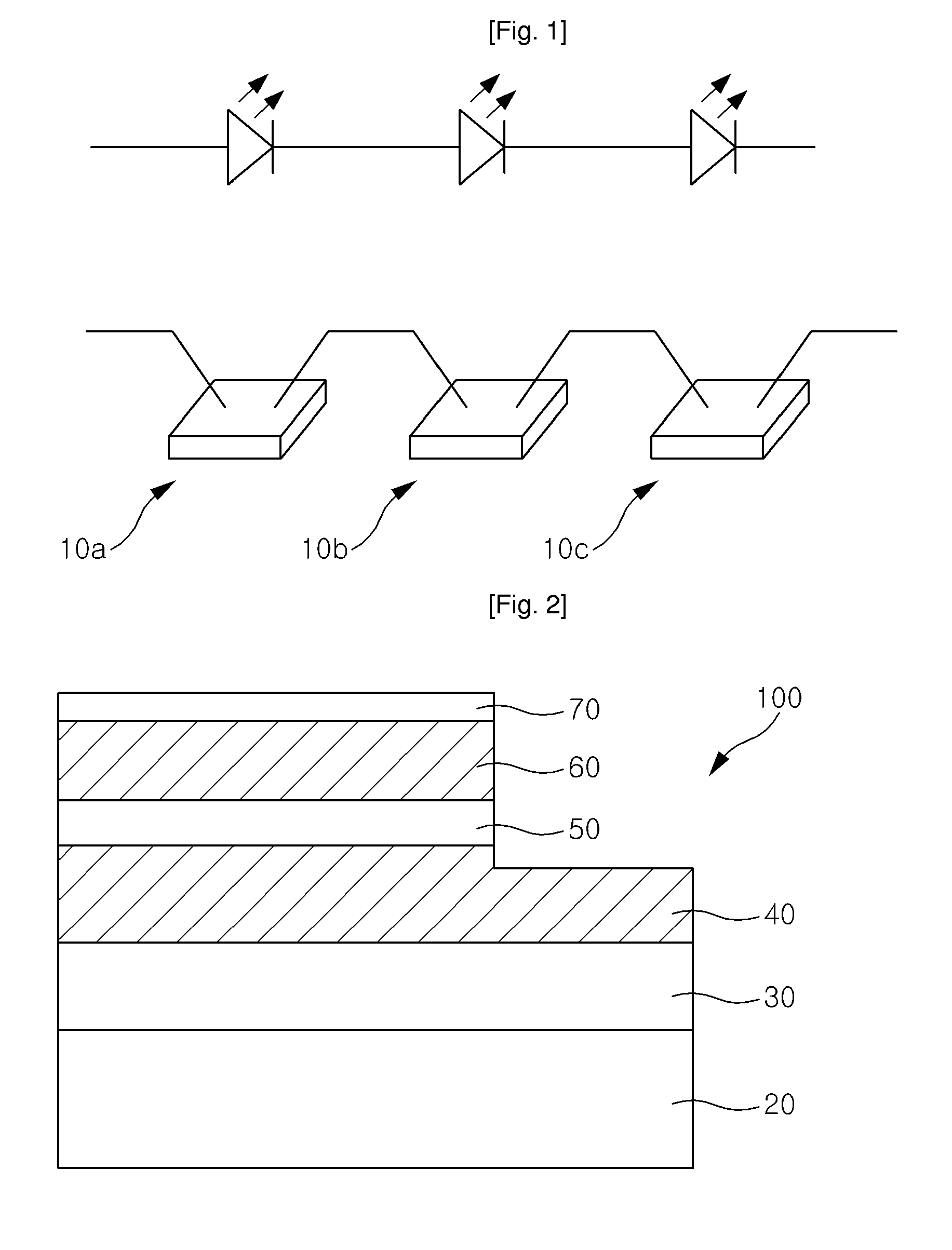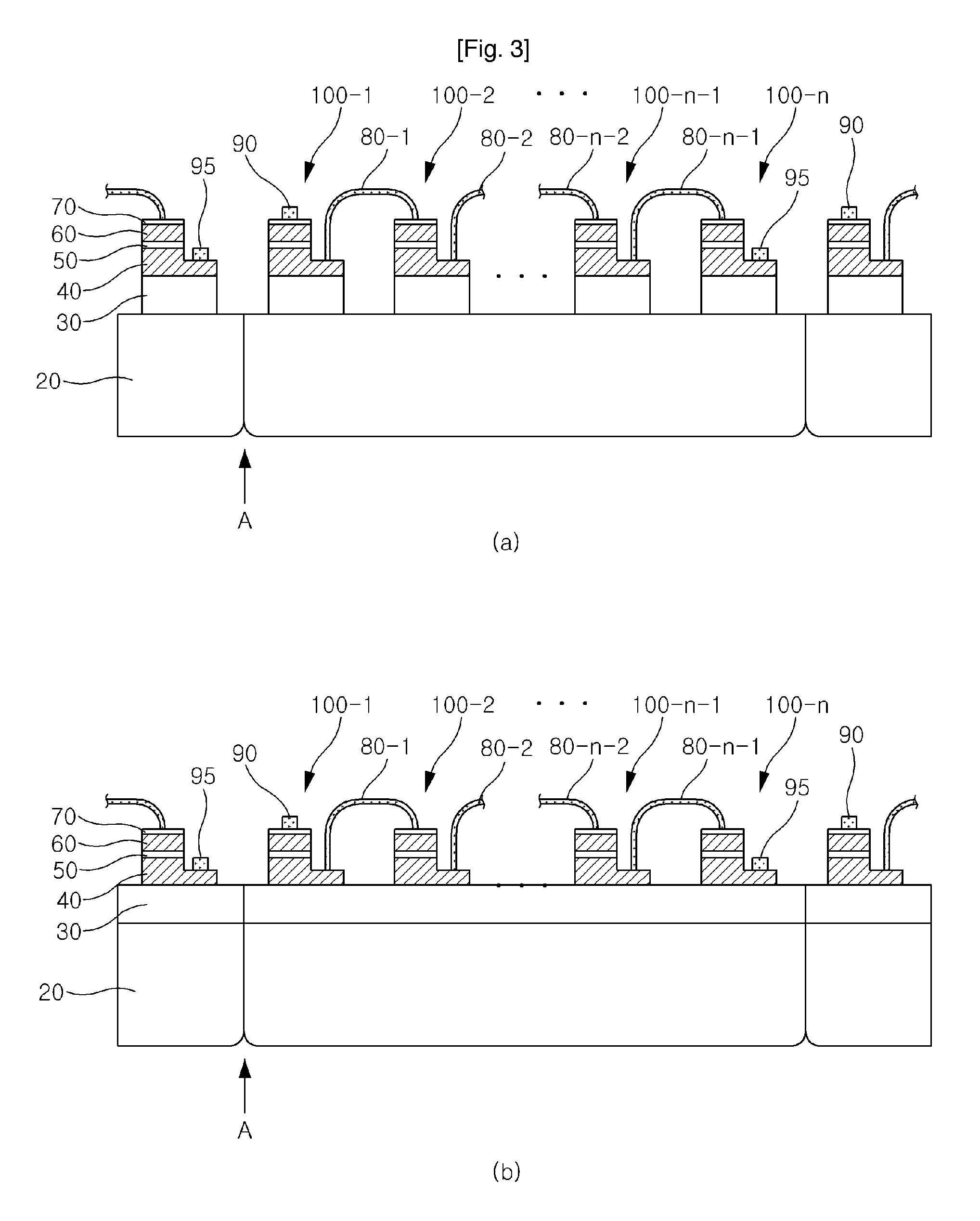Light Emitting Element With A Plurality Of Cells Bonded, Method Of Manufacturing The Same, And Light Emitting Device Using The Same
a technology cells, which is applied in the direction of solid-state devices, electric lighting sources, electric light sources, etc., can solve the problems of affecting the production efficiency of light emitting elements, so as to simplify the manufacturing process of light emitting devices and reduce the fraction of defectives. , the effect of high voltag
- Summary
- Abstract
- Description
- Claims
- Application Information
AI Technical Summary
Benefits of technology
Problems solved by technology
Method used
Image
Examples
first embodiment
[0090]FIG. 8 is a conceptual diagram illustrating a light emitting element according to the present invention.
[0091] Referring to FIG. 8, in the light emitting element 300 of this embodiment, a plurality of light emitting cells 100 and 200 connected in series are electrically connected to the outside.
[0092] In the light emitting element 300, first and second electrodes 310 and 320 are formed on an N-type pad 95 or 210 and a P-type pad 90 or 250 through a wiring process, respectively. The first and the second electrodes 310 and 320 refer to an anode electrode and a cathode electrode, respectively. Accordingly, a single light emitting element 300 with the plurality of light emitting cells 100 and 200 connected in series is manufactured.
[0093] In addition, it is possible to provide a light emitting element with an additional controller added thereto so that the light emitting element can be operated even in AC driving.
[0094] This embodiment is not limited to the case where a plurali...
third embodiment
[0100]FIG. 10 is a conceptual diagram illustrating a light emitting element according to the present invention.
[0101] Referring to FIG. 10, the light emitting element 300 of this embodiment comprises a plurality of light emitting cells 100 and 200 connected in series, a rectifying bridge unit 301 for applying a predetermined current to the light emitting cells 100 and 200, and electrodes 310 and 320 connected to the rectifying bridge unit 301.
[0102] In this embodiment, the plurality of light emitting cells 100 and 200 are electrically connected to an external power source not directly but through the rectifying bridge unit 301 connected to first and second electrodes 310 and 320. The rectifying bridge unit 301 comprises a first diode D1 connected to the first electrode 310 and an anode terminal of the light emitting cells 100 and 200, a second diode D2 connected to the second electrode 320 and an anode terminal of the light emitting cells 100 and 200, a third diode D3 connected to ...
fourth embodiment
[0104]FIG. 11 is a conceptual diagram illustrating a light emitting element according to the present invention.
[0105] Referring to FIG. 11, the light emitting element 300 of this embodiment comprises a plurality of light emitting cells 100 and 200 connected in series, a rectifying bridge unit 301 for applying a predetermined current to the light emitting cells 100 and 200, and electrodes 310 to 340 connected to the light emitting cells 100 and 200 and the rectifying bridge unit 301.
[0106] In this embodiment, the plurality of serially connected light emitting cells 100 and 200 are electrically connected to an external power source through second and fourth electrodes 320 and 340, and through the rectifying bridge unit 301 connected to first and third electrodes 310 and 330. The same power source or different power sources may be connected to the light emitting cells 100 and 200 and the rectifying bridge unit 301.
[0107] The rectifying bridge unit 301 comprises a first diode D1 conne...
PUM
 Login to View More
Login to View More Abstract
Description
Claims
Application Information
 Login to View More
Login to View More - R&D
- Intellectual Property
- Life Sciences
- Materials
- Tech Scout
- Unparalleled Data Quality
- Higher Quality Content
- 60% Fewer Hallucinations
Browse by: Latest US Patents, China's latest patents, Technical Efficacy Thesaurus, Application Domain, Technology Topic, Popular Technical Reports.
© 2025 PatSnap. All rights reserved.Legal|Privacy policy|Modern Slavery Act Transparency Statement|Sitemap|About US| Contact US: help@patsnap.com



